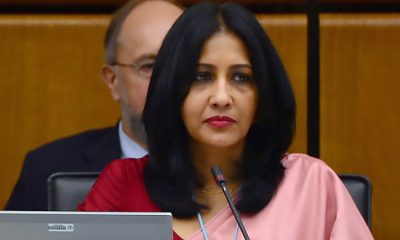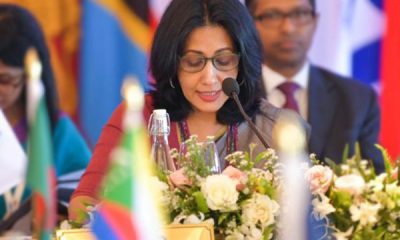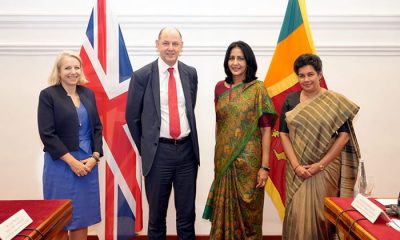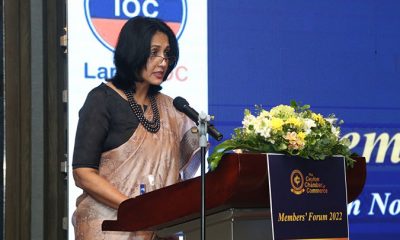Midweek Review
Westminster event declares support for Canadian action against Rajapaksa brothers
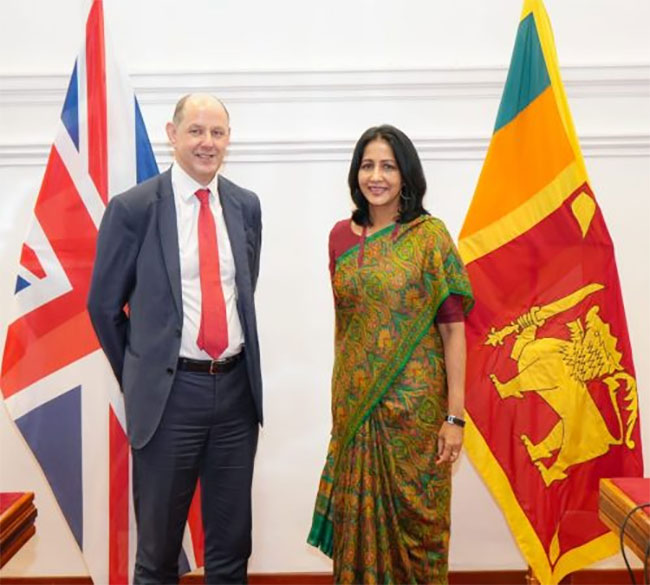
As a result of sheer negligence, Sri Lanka has ended up being categorized as a perpetrator of war crimes, and those who had fought for the country are mercilessly targeted. There cannot be a better example than Air Marshal Sumangala Dias who suffered due to Sri Lanka’s failure. Canada refused to accept Dias as Sri Lanka’s High Commissioner though the former Sri Lanka Air Force Commander has never been under human rights scrutiny. Subsequently, the government proposed Dias as Sri Lanka’s Ambassador to Italy. That move, too, failed. Italy, as a member state of the EU, pursuing war crimes accusations against Sri Lanka, declined to accept the retired SLAF Chief. The Foreign Ministry should accept responsibility for its failure to brief the inept political leadership of the stand taken by Canada and Italy on this issue. In spite of knowing what would be the outcome, the Foreign Ministry allowed the normal process to go ahead. At the end, both Canada and Italy declined to accept the retired Air Chief.
In fact, the Darusman report could have been used to counter lies. If acknowledged the discrepancy in the number of deaths caused during the final phase of the conflict. Darusman on the basis of unnamed sources alleged 40,000 deaths during Jan-May 2009 whereas the UN mission in Colombo on the basis of records made available by ICRC, hospitals et al reported between 7,000 and 8,000 deaths between August 2008 and May 2009.
By Shamindra Ferdinando
Liberal Democrats leader and MP for Surbiton, Edward Jonathan Davey, recently urged British Premier Rishi Sunak’s government to follow Canadian Premier Justin Trudeau on the Sri Lanka war crimes issue. Obviously Davey was referring to the unprecedented unilateral Canadian sanctions, recently imposed on former Presidents, Mahinda Rajapaksa (Nov. 2005-Jan. 2015) and Gotabaya Rajapaksa (2019 – Nov.-2022 July).
The occasion was what the Tamil Guardian called a night of festive celebration, musical performances and classical dance, in Central Hall, in Westminster, to celebrate Thai Pongal and Tamil heritage month. The event was described as a joint effort by the British Tamil community.
The Tamil Guardian quoted Ed Davey as having declared that the Canadian decision to impose sanctions on the Rajapaksa brothers was ‘absolutely right’ and that ‘the time for fine words has gone.’
The World Tamil Historic Society, Transnational Government of Tamil Eelam, Tamils for Labour, Tamil Coordinating Committee, British Tamil Chamber of Commerce, and British Tamil Conservatives, contributed to the event.
There shouldn’t be any issue over the celebration of Thai Pongal, Tamil heritage month, as well as the contribution the Tamil community made to British society, with the participation of British politicians.
British politicians, at such events, reflected the importance of the British Tamils, of Sri Lankan origin, as a significant vote bank.
The Westminster event was attended by several senior representatives of political parties, including Chairman of the Conservative Party, Nadhim Zahawi. The event reiterated commitment of all stakeholders, for justice and accountability.
Labour MP for Eastham, Stephen Timms, too, urged the British government to impose sanctions on individuals who, the British knew, were responsible for war crimes. The MP underscored the need for an ‘independent, international investigation’ in the absence of a domestic reconciliation process in Sri Lanka.
Rishi Sunak and Labour Party leader, Keir Starmer, sent video messages, appreciating the contribution made by the British Tamil community.
In the wake of the UK MPs’ demand for sanctions on Sri Lanka, Foreign Secretary, Aruni Wijewardane, received UK’s Permanent Under Secretary of the Foreign, Commonwealth and Development Office (FCDO), Sir Philip Barton, at the Foreign Ministry, in Colombo, on January 17. A lengthy statement, issued by the Foreign Ministry, described the discussion as a constructive bilateral engagement in the 75th year of UK-SL diplomatic relations. The visiting official was accompanied by British High Commissioner to Sri Lanka, Sarah Hulton.
The media release didn’t indicate whether Sri Lanka will take up the contentious accountability issue, as the UK spearheads the high profile campaign against Sri Lanka. Therefore, the writer rationally ascertained that no other matter had been taken up at the discussion.
With the Canadian declaration that the Rajapaksa brothers, during Eelam War IV (2006-2009), perpetrated ‘gross and systematic violations of human rights,’ the campaign against Sri Lanka has entered a new phase.
The international media quoted Canadian Foreign Affairs Minister, Mélanie Joly, as having said that they took decisive action to end international impunity against violators of international law. The Canadian measures, include travel bans and asset freezes.
The latest action should be examined against the backdrop of the Canadian Parliament recognizing Tamil genocide in Sri Lanka.
Over 14 years, after the successful conclusion of the war against the Liberation Tigers of Tamil Eelam (LTTE), Sri Lanka is yet to counter lies. The failure on the part of successive governments to defend wartime political and military leaderships has facilitated the Western agenda. Sri Lanka’s bankruptcy has accelerated their despicable agenda.
Successive inept and treacherous Sri Lankan governments, and its often much compromised diplomatic service, never made a genuine attempt to set the record straight in Geneva, New York or Washington. In fact, they cooperated with those who propagated lies by conveniently failing to properly address issues at hand. Sri Lanka seemed determined not to defend its war against the LTTE, one of the half a dozen terrorist groups, formed by India.
Canada and the UK are not interested in inquiring into the origins of terrorism here. They do not care about the Tamils, who died in the hands of the Indian Army, during its deployment in the then temporarily merged Northern and Eastern Provinces. The loss of 1,300 officers, and men, and injuries suffered by more than double that figure in combat, during the period, 1987-1990, revealed the ferocity of fighting between one-time guardians of Sri Lankan terrorists and their ‘students.’
There had been numerous excesses and reprisals but such strategies were definitely not Indian policy at that time, but what happens in most wars. These Western paragons of virtue, what did their forces do, across the world, during the colonial past, and how do their law enforcers behave to this day, especially against blacks, natives in Canada, Australia and America.
Post-war national reconciliation
hindered
During the war, there had been many excesses. The Sri Lankan military cannot, under any circumstances deny that fact. However, that hadn’t been the government policy. Unfortunately, in the absence of a cohesive strategy, Sri Lanka remains accused of genocide, and the recent Canadian actions meant that the two Presidents were now categorized as war criminals.
But the billion dollar question is where is the justice for far greater war crimes, committed by the West, in places like Afghanistan, Syria, Iraq, Libya, Yemen, etc. Easily, more than a million innocent civilians would have perished by now, in these countries, because of those endless wars, fermented by the West on trumped up, or purely frivolous excuses, like Saddam Hussein is having weapons of mass destruction, or Gaddafi is butchering his own people, while everyone knew that a man like Saddam should be given a prize for keeping a divided nation, like Iraq, in one piece, or that Gaddafi was one of the most benevolent leaders in the entire world.
Foreign Minister, Ali Sabry, PC, in response to a query raised by the writer, at a Foreign Ministry media briefing, last year, said that sanctions had been imposed on entire fighting divisions. That was months before the categorization of the two Presidents as war criminals.
It would be a grave mistake, on the part of the Western community, to believe humiliation of the military would help post-war national reconciliation. On one hand, the Western community wants the Prevention of Terrorism (PTA) abolished, the remaining terror suspects released, and a one-time political arm of the vanquished LTTE, the Tamil National Alliance (TNA) political demands met. On the other hand, the grouping wants the military punished on unsubstantiated war crimes allegations. Canadian measures are in line with that despicable strategy.
The Sri Lanka Parliament, as the supreme institution, should be ashamed of its pathetic response to the Western war crimes campaign. Sri Lanka has conveniently failed, at least to remind the Western community how R. Sampanthan’s TNA served the LTTE interests by declaring terrorist leader, Velupillai Prabhakaran, the sole representative of the Tamil speaking people.
The TNA bestowed that honour, on the LTTE, in 2001. The Sri Lankan military restored the TNA as the principal political group in the Northern and Eastern provinces, after the elimination of the LTTE, militarily, in May 2009.
Instead of recognizing Sri Lanka’s achievement, the Western community has targeted Sri Lanka, basically for two reasons, namely (1) Colombo’s relationship with China and (11) the Diaspora factor.
Actually, Sri Lanka never had a strategy to counter lies. That is the undeniable truth. Incumbent UN Chief Antonio Guterres’s predecessor, Ban Ki-moon, once compared the Vanni offensive with that of Ruwanda and Serbia genocides in the 1990s. Former UN Secretary General, South Korean Ki-moon played his part to facilitate the Western agenda, in spite of his own mission, in Colombo, contradicting unsubstantiated accusations.
How SL facilitated Western strategy
Sri Lanka never made use of a golden opportunity, given by British Lord Naseby, in Oct. 2017, to prepare a solid defence of the armed forces. His stunning revelation, in the House of Lords, two years after Sri Lanka, under the shameful Yahapalana regime, co-sponsored accountability resolution against our own country, at the Geneva Human Rights Council, exposed the British duplicity.
On the basis of hitherto confidential dispatches from the British High Commission, in Colombo, during the last phase of the war – January-May 2009, the Conservative politician contradicted the very basis of the three-member UN Darusman report. This report, released on March 31, 2011, had been the primary reason for the 2015 accountability resolution that faulted the Sri Lanka Army.
The World War 11 fighter pilot fought a near three-year battle with the British administration to secure the confidential dispatches and was finally able to obtain a highly redacted version, to contradict the lies, in the second week of Oct. 2017. Although the then Foreign Minister Tilak Marapana, PC, in his address to the UNHRC, made a reference to Lord Naseby’s revelations, Sri Lanka never requested Geneva to examine the British dispatches.
The author of British dispatches, Lt. Col. Anthony Gash, has never challenged the authenticity of heavily censored dispatches, disclosed by Lord Naseby.
Sri Lanka, in June 2011, squandered a similar opportunity to make a strong case for a revisit of the one-sided Darusman report. The then US Defence Advisor, in Colombo, Lt. Col. Lawrence Smith, quite convincingly defended the Sri Lanka Army, at the 2011 Colombo Defence Seminar. The American contradicted unsubstantiated allegations, raised by a retired Indian Major General Ashok K. Metha, formerly of the infamous IPKF. Lt. Col. Smith must have made that declaration, based on information available to the US Embassy, in Colombo, as well as other dispatches from the war zone. And, most importantly, the American officer made the declaration within three months after the releasing of the Darusman report. Sri Lanka never used British and American dispatches in her defence.
Western powers continue to harass Sri Lanka on the basis of unsubstantiated war crimes
accusations
Geneva moves to further investigate Sri Lanka should be challenged as the previous accusations, that led to the 2015 Geneva resolution, remained uninvestigated.
According to the Darusman report (paragraph 23: Confidentiality of the Panel’s records), the accusations cannot be examined till 2031. This strange stipulation has a further clause stating that the time bar could be extended for a further period. We must be the only country not allowed to examine specific accusations, directed at its armed forces. Successive governments never took the entire gamut of issues, into consideration, before making representations, on behalf of the country.
The incumbent Wickremesinghe-Rajapaksa administration is no exception. In spite of repeated vows to defend the armed forces, the previous Gotabaya Rajapaksa-led government pathetically failed in its duty and responsibility.
Sri Lanka’s handling of accusations, relating to the Mannar mass graves, during the Yahapalana administration, revealed how the Foreign and Defence Ministry neglected their responsibilities. But even after the change of government, in the wake of Gotabaya Rajapaksa’s victory at the 2019 presidential poll, Sri Lanka did nothing to change the strategy.
The Mannar mass grave lie was contradicted by a reputed Miami-based laboratory. It cleared the war-winning Sri Lanka Army of any responsibility for extra-judicial killings there. The independent carbon testing report, from the internationally recognized US laboratory, concluded that the victims likely died up to 615 years ago — predating even the first European colonization of the country by the Portuguese.
Sri Lanka’s Office on Missing Persons (OMP) funded the tests on the remains to determine whether the victims were killed, during the conflict.
But, by then, Geneva has directly blamed Sri Lanka for the Mannar Sathosa ground mass graves. The then Human Rights Commissioner, Michelle Bachelet, audaciously went to the extent of referring to the Mannar mass grave site, in her annual report (section 23), submitted to the UNHRC. The following is the relevant section: “On May 29, 2018, human skeletal remains were discovered at a construction site in Mannar (Northern Province), Excavations conducted in support of the Office on Missing Persons, revealed a mass grave from which more than 300 skeletons were discovered. It was the second mass grave found in Mannar, following the discovery of a site, in 2014. Given that other mass graves might be expected to be found in the future, systematic access to grave sites by the Office, as an observer, is crucial for it to fully discharge its mandate, particularly with regard to the investigation and identification of remains, it is imperative that the proposed reforms on the law relating to inquests, and relevant protocols to operationalize the law be adopted. The capacity of the forensic sector must also be strengthened, including in areas of forensic anthropology, forensic archaeology and genetics, and its coordination with the Office of Missing Persons must be ensured.”
Geneva never expected the US report on Mannar mass graves to go against its strategy. The TNA, too, reacted as expected. The one-time LTTE ally never expected the US report to contradict high profile allegations. Colombo based diplomats, and foreign officials, visited the scene ,as interested parties propagated lies.
On behalf of the TNA, a lawmaker, representing the Vanni region, has called for a fresh testing in another lab in some other country. Our Vavuniya correspondent, Dinasena Ratugamage, quoted Mullaitivu District MP Nirmalanathan Sivamohan as having said: “This is not to say that we do not accept the reports sent by a lab in Florida, US, but given the importance of the Mannar grave site we need to get a second opinion.”
There were many other developments ranging from a spate of WikiLeaks revelations to political decisions that exposed the Western strategy. But, perhaps the irreversible defence of the military was provided by the Tamil community, living in the Northern and Eastern electoral districts, at the 2010 presidential election. The war-winning General Sarath Fonseka, in spite of suffering massive defeat in the hands of Mahinda Rajapaksa, comfortably won all predominately The Tamil speaking electoral districts, in those provinces, despite the TNA and the Tamil Diaspora, having accused him and his Army of committing war crimes. The Tamil community overwhelmingly responded to the TNA’s call to vote for Fonseka, who contested as the common candidate, fielded by the UNP-led alliance that included the JVP.
Unfortunately, Sri Lanka never bothered to officially take up this development to counter propaganda. Even if the TNA asked for the Tamil community to vote for Fonseka, the electorate wouldn’t have overwhelmingly done so unless it was convinced the eradication of the LTTE was a necessity.
Midweek Review
Year ends with the NPP govt. on the back foot

The failure on the part of the Janatha Vimukthi Peramuna (JVP)-led National People’s Power (NPP) government to fulfil a plethora of promises given in the run up to the last presidential election, in September, 2024, and a series of incidents, including cases of corruption, and embarrassing failure to act on a specific weather alert, ahead of Cyclone Ditwah, had undermined the administration beyond measure.
Ditwah dealt a knockout blow to the arrogant and cocky NPP. If the ruling party consented to the Opposition proposal for a Parliamentary Select Committee (PSC) to probe the events leading to the November 27 cyclone, the disclosure would be catastrophic, even for the all-powerful Executive President Anura Kumara Dissanayake, as responsible government bodies, like the Disaster Management Centre that horribly failed in its duty, and the Met Department that alerted about the developing storm, but the government did not heed its timely warnings, directly come under his purview.
The NPP is on the back foot and struggling to cope up with the rapidly developing situation. In spite of having both executive presidency and an overwhelming 2/3 majority in Parliament, the government seems to be weak and in total disarray.
The regular appearance of President Dissanayake in Parliament, who usually respond deftly to criticism, thereby defending his parliamentary group, obviously failed to make an impression. Overall, the top NPP leadership appeared to have caused irreparable damage to the NPP and taken the shine out of two glorious electoral victories at the last presidential and parliamentary polls held in September and November 2024 respectively.
The NPP has deteriorated, both in and out of Parliament. The performance of the 159-member NPP parliamentary group, led by Prime Minister Dr. Harini Amarasuriya, doesn’t reflect the actual situation on the ground or the developing political environment.
Having repeatedly boasted of its commitment to bring about good governance and accountability, the current dispensation proved in style that it is definitely not different from the previous lots or even worse. (The recent arrest of a policeman who claimed of being assaulted by a gang, led by an NPP MP, emphasised that so-called system change is nothing but a farce) In the run-up to the November, 2024, parliamentary polls, President Dissanayake, who is the leader of both the JVP and NPP, declared that the House should be filled with only NPPers as other political parties were corrupt. Dissanayake cited the Parliament defeating the no-confidence motions filed against Ravi Karunanayake (2016/over Treasury Bond scams) and Keheliya Rambukwella (2023/against health sector corruption) to promote his argument. However, recently the ongoing controversy over patient deaths, allegedly blamed on the administration of Ondansetron injections, exposed the government.
Mounting concerns over drug safety and regulatory oversight triggered strong calls from medical professionals, and trade unions, for the resignation of senior officials at the National Medicines Regulatory Authority (NMRA) and the State Pharmaceutical Corporation (SPC).
Medical and civil rights groups declared that the incident exposed deep systemic failures in Sri Lanka’s drug regulatory framework, with critics warning that the collapse of quality assurance mechanisms is placing patients’ lives at grave risk.
The Medical and Civil Rights Professional Association of Doctors (MCRPA), and allied trade unions, accused health authorities of gross negligence and demanded the immediate resignation of senior NMRA and SPC officials.
MCRPA President Dr. Chamal Sanjeewa is on record as having said that the Health Ministry, NMRA and SPC had collectively failed to ensure patient safety, citing, what he described as, a failed drug regulatory system.
The controversy has taken an unexpected turn with some alleging that the NPP government, on behalf of Sri Lanka and India, in April this year, entered into an agreement whereby the former agreed to lower quality/standards of medicine imports.
Trouble begins with Ranwala’s resignation
The NPP suffered a humiliating setback when its National List MP Asoka Ranwala had to resign from the post of Speaker on 13 December, 2024, following intense controversy over his educational qualification. The petroleum sector trade union leader served as the Speaker for a period of three weeks and his resignation shook the party. Ranwala, first time entrant to Parliament was one of the 18 NPP National List appointees out of a total of 29. The Parliament consists of 196 elected and 29 appointed members. Since the introduction of the National List, in 1989, there had never been an occasion where one party secured 18 slots.
The JVP/NPP made an initial bid to defend Ranwala but quickly gave it up and got him to resign amidst media furor. Ranwala dominated the social media as political rivals exploited the controversy over his claimed doctorate from the Waseda University of Japan, which he has failed to prove to this day. But, the JVP/NPP had to suffer a second time as a result of Ranwala’s antics when he caused injuries to three persons, including a child, on 11 December, in the Sapugaskanda police area.
The NPP made a pathetic, UNP and SLFP style effort to save the parliamentarian by blaming the Sapugaskanda police for not promptly subjecting him for a drunk driving test. The declaration made by the Government Analyst Department that the parliamentarian hadn’t been drunk at the time of the accident, several days after the accident, does not make any difference. Having experienced the wrongdoing of successive previous governments, the public, regardless of what various interested parties propagated on social media, realise that the government is making a disgraceful bid to cover-up.
No less a person than President Dissanayake is on record as having said that their members do not consume liquor. Let us wait for the outcome of the internal investigation into the lapses on the part of the Sapugaskanda police with regard to the accident that happened near Denimulla Junction, in Sapugaskanda.
JVP/NPP bigwigs obviously hadn’t learnt from the Weligama W 15 hotel attack in December, 2023, that ruined President Ranil Wickremeinghe’s administration. That incident exposed the direct nexus between the government and the police in carrying out Mafia-style operations. Although the two incidents cannot be compared as the circumstances differ, there is a similarity. Initially, police headquarters represented the interests of the wrongdoers, while President Wickremesinghe bent over backwards to retain the man who dispatched the CCD (Colombo Crime Division) team to Weligama, as the IGP. The UNP leader went to the extent of speaking to Chief Justice Jayantha Jayasuriya, PC, and Speaker Mahinda Yapa Abeywardena to push his agenda. There is no dispute the then Public Security Minister Tiran Alles wanted Deshabandu Tennakoon as IGP, regardless of a spate of accusations against him, in addition to him being faulted by the Supreme Court in a high-profile fundamental rights application.
The JVP/NPP must have realised that though the Opposition remained disorganised and ineffective, thanks to the media, particularly social media, a case of transgression, if not addressed swiftly and properly, can develop into a crisis. Action taken by the government to protect Ranwala is a case in point. Government leaders must have heaved a sigh of relief as Ranwala is no longer the Speaker when he drove a jeep recklessly and collided with a motorcycle and a car.
Major cases, key developments
Instead of addressing public concerns, the government sought to suppress the truth by manipulating and exploiting developments
* The release of 323 containers from the Colombo Port, in January 2025, is a case in point. The issue at hand is whether the powers that be took advantage of the port congestion to clear ‘red-flagged’ containers.
Although the Customs repeatedly declared that they did nothing wrong and such releases were resorted even during Ranil Wickremesinghe’s presidency (July 2022 to September 2024), the public won’t buy that. Container issue remains a mystery. That controversy eroded public confidence in the NPP that vowed 100 percent transparency in all its dealings. But the way the current dispensation handled the Port congestion proved that transparency must be the last thing in the minds of the JVPers/NPPers holding office.
* The JVP/NPP’s much touted all-out anti-corruption stand suffered a debilitating blow over their failure to finalise the appointment of a new Auditor General. In spite of the Opposition, the civil society, and the media, vigorously taking up this issue, the government continued to hold up the appointment by irresponsibly pushing for an appointment acceptable to President Dissanayake. The JVP/NPP is certainly pursuing a strategy contrary to what it preached while in the Opposition and found fault with successive governments for trying to manipulate the AG. It would be pertinent to mention that President Dissanayake should accept the responsibility for the inordinate delay in proposing a suitable person to that position. The government failed to get the approval of the Constitutional Council more than once to install a favourite of theirs in it, thanks to the forthright position taken by its civil society representatives.
The government should be ashamed of its disgraceful effort to bring the Office of the Auditor General under its thumb:
* The JVP/NPP government’s hotly disputed decision to procure 1,775 brand-new double cab pickup trucks, at a staggering cost exceeding Rs. 12,500 mn, under controversial circumstances, exposed the duplicity of that party that painted all other political parties black. Would the government rethink the double cab deal, especially in the wake of economic ruination caused by Cyclone Ditwah? The top leadership seems to be determined to proceed with their original plans, regardless of immeasurable losses caused by Cyclone Ditwah. Post-cyclone efforts still remain at a nascent stage with the government putting on a brave face. The top leadership has turned a blind eye to the overwhelming challenge in getting the country back on track especially against the backdrop of its agreement with the IMF.
Post-Cyclone Ditwah recovery process is going to be slow and extremely painful. Unfortunately, both the government and the Opposition are hell-bent on exploiting the miserable conditions experienced by its hapless victims. The government is yet to acknowledge that it could have faced the crisis much better if it acted on the warning issued by Met Department Chief Athula Karunanayake on 12 November, two weeks before the cyclone struck.
Foreign policy dilemma
Sri Lanka moved further closer to India and the US this year as President Dissanayake entered into several new agreements with them. In spite of criticism, seven Memorandums of Understanding (MoUs), including one on defence, remains confidential. What are they hiding?
Within weeks after signing of the seven MoUs, India bought the controlling interests in the Colombo Dockyard Limited for USD 52 mn.
Although some Opposition members, representing the SJB, raised the issue, their leader Sajith Premadasa, during a subsequent visit to New Delhi, indicated he wouldn’t, under any circumstances, raise such a contentious issue.
Premadasa went a step further. The SJB leader assured his unwavering commitment to the full implementation of the 13th Amendment to the Constitution that was forced on Sri Lanka during President JRJ’s administration, under the highly questionable Indo-Lanka Accord of July, 1987, after the infamous parippu drop by Indian military aircraft over Jaffna, their version of the old gunboat diplomacy practiced by the West.
Both India and the US consolidated their position here further in the post-Aragalaya period. Those who felt that the JVP would be in a collision course with them must have been quite surprised by the turn of events and the way post-Aragalaya Sri Lanka leaned towards the US-India combine with not a hum from our carboard revolutionaries now installed in power. They certainly know which side of the bread is buttered. Sri Lanka’s economic deterioration, and the 2023 agreement with the IMF, had tied up the country with the US-led bloc.
In spite of India still procuring large quantities of Russian crude oil and its refusal to condemn Russia over the conflict in Ukraine, New Delhi has obviously reached consensus with the US on a long-term partnership to meet the formidable Chinese challenge. Both countries feel each other’s support is incalculably vital and indispensable.
Sri Lanka, India, and Japan, in May 2019, signed a Memorandum of Cooperation (MoC) to jointly develop the East Container Terminal (ECT) at the Colombo Port. That was during the tail end of the Yahapalana administration. The Gotabaya Rajapaksa administration wanted to take that project forward. But trade unions, spearheaded by the JVP/NPP combine, thwarted a tripartite agreement on the basis that they opposed privatisation of the Colombo Port at any level.
But, the Colombo West International Terminal (CWIT) project, that was launched in November, 2022, during Ranil Wickremesinghe’s presidency, became fully operational in April this year. The JVP revolutionary tiger has completely changed its stripes regarding foreign investments and privatisation. If the JVP remained committed to its previous strategies, India taking over CDL or CWIT would have been unrealistic.
The failure on the part of the government to reveal its stand on visits by foreign research vessels to ports here underscored the intensity of US and Indian pressure. Hope our readers remember how US and India compelled the then President Wickremesinghe to announce a one-year moratorium on such visits. In line with that decision Sri Lanka declared research vessels wouldn’t be allowed here during 2024. The NPP that succeeded Wickremesinghe’s administration in September, 2024, is yet to take a decision on foreign research vessels. What a pity?
The NPP ends the year on the back foot, struggling to cope up with daunting challenges, both domestic and external. The recent revelation of direct Indian intervention in the 2022 regime change project here along with the US underscored the gravity of the situation and developing challenges. Post-cyclone period will facilitate further Indian and US interventions for obvious reasons.
****

Perhaps one of the most debated events in 2025 was the opening of ‘City of Dreams Sri Lanka’ that included, what the investors called, a world-class casino. In spite of mega Bollywood star Shah Rukh Khan’s unexpected decision to pull out of the grand opening on 02 August, the investors went ahead with the restricted event. The Chief Guest was President Anura Kumara Dissanayake, who is also the Finance Minister, in addition to being the Defence Minister. Among the other notable invitees were Dissanayake’s predecessor Ranil Wickremesinghe, whose administration gave critical support to the high-profile project, worth over USD 1.2 bn. John Keells Holdings PLC (JKH) and Melco Resorts & Entertainment (Melco) invested in the project that also consist of the luxurious Nüwa hotel and a premium shopping mall. Who would have thought President Dissanayake’s participation, even remotely, possible, against the backdrop of his strong past public opposition to gambling of any kind?
Don’t forget ‘City of Dreams’ received a license to operate for a period of 20 years. Definitely an unprecedented situation. Although that license had been issued by the Wickremesinghe administration, the NPP, or any other political party represented in Parliament, didn’t speak publicly about that matter. Interesting, isn’t it, coming from people, still referred by influential sections of the Western media, as avowed Marxists?
By Shamindra Ferdinando
Midweek Review
The Aesthetics and the Visual Politics of an Artisanal Community

Through the Eyes of the Patua:
 Organised by the Colombo Institute for Human Sciences in collaboration with Millennium Art Contemporary, an interesting and unique exhibition got underway in the latter’s gallery in Millennium City, Oruwala on 21 December 2025. The exhibition is titled, ‘Through the Eyes of the Patua: Ramayana Paintings of an Artisanal Community’ and was organized in parallel with the conference that was held on 20 December 2025 under the theme, ‘Move Your Shadow: Rediscovering Ravana, Forms of Resistance and Alternative Universes in the Tellings of the Ramayana.’ The scrolls on display at the gallery are part of the over 100 scrolls in the collection of Colombo Institute’s ‘Roma Chatterji Patua Scroll Collection.’ Prof Chatterji, who taught Sociology at University of Delhi and at present teaches at Shiv Nadar University donated the scrolls to the Colombo Institute in 2024.
Organised by the Colombo Institute for Human Sciences in collaboration with Millennium Art Contemporary, an interesting and unique exhibition got underway in the latter’s gallery in Millennium City, Oruwala on 21 December 2025. The exhibition is titled, ‘Through the Eyes of the Patua: Ramayana Paintings of an Artisanal Community’ and was organized in parallel with the conference that was held on 20 December 2025 under the theme, ‘Move Your Shadow: Rediscovering Ravana, Forms of Resistance and Alternative Universes in the Tellings of the Ramayana.’ The scrolls on display at the gallery are part of the over 100 scrolls in the collection of Colombo Institute’s ‘Roma Chatterji Patua Scroll Collection.’ Prof Chatterji, who taught Sociology at University of Delhi and at present teaches at Shiv Nadar University donated the scrolls to the Colombo Institute in 2024.
The paintings on display are what might be called narrative scrolls that are often over ten feet long. Each scroll narrates a story, with separate panels pictorially depicting one component of a story. The Patuas or the Chitrakars, as they are also known, are traditionally bards. A bard will sing the story that is depicted by each scroll which is simultaneously unfurled. For Sri Lankan viewers for whom the paintings and their contexts of production and use would be unusual and unfamiliar, the best way to understand them is to consider them as a comic strip. In the case of the ongoing exhibition, since the bards or the live songs are not a part of it, the word and voice elements are missing. However, the curators have endeavoured to address this gap by displaying a series of video presentations of the songs, how they are performed and the history of the Patuas as part of the exhibition itself.
The unfamiliarity of the art on display and their histories, necessitates broader explanation. The Patua hail from Medinipur District of West Bengal in India. Essentially, this community of artisans are traditional painters and singers who compose stories based on sacred texts such as the Ramayana or Mahabharata as well as secular events that can vary from the bombing of the Twin Towers in New York in 2001 to the Indian Ocean Tsunami of 2004. Even though painted storytelling is done by a number of traditional artisan groups in India, the Patua is the only community where performers and artists belong to the same group. Hence, Professor Chatterji, in her curatorial note for the exhibition calls them “the original multi-media performers in Bengal.”
‘The story of the Patuas’ also is an account of what happens to such artisanal communities in contemporary times in South Asia more broadly even though this specific story is from India. There was a time before the 21st century when such communities were living and working across a large part of eastern India – each group with a claim to their recognizably unique style of painting. However, at the present time, this community and their vocation is limited to areas such as Medinipur, Birbhum, Purulia in West Bengal and Dumka in Jharkhand.
A pertinent question is how the scroll painters from Medinipur have survived the vagaries of time when others have not. Professor Chatterji provides an important clue when she notes that these painters, “unlike their counterparts elsewhere, are also extremely responsive to political events.” As such, “apart from a rich repertoire of stories based on myth and folklore, including the Ramayana and other epics, they have, over many years, also composed on themes that range from events of local or national significance such as boat accidents and communal violence to global events such as the tsunami and the attack on the World Trade Centre.”
There is another interesting aspect that becomes evident when one looks into the socio-cultural background of this community. As Professor Chatterji writes, “one significant feature that gives a distinct flavour to their stories is the fact that a majority of Chitrakars consider themselves to be Muslims but perform stories based largely on Hindu myths.” In this sense, their story complicates the tension-ridden dichotomies between ethno-cultural and religious groups typical of relations between groups in India as well as more broadly in South Asia, including in Sri Lanka. Prof Chatterji suggests this positionality allows the Patua to have “a truly secular voice so vital in the world that we live in today.”
As a result, she notes, contemporary Patuas “have propagated the message of communal harmony in their compositions in the context of the recent riots in India and the Gulf War. Their commentaries couched in the language of myth are profoundly symbolic and draw on a rich oral tradition of storytelling.” What is even more important is their “engagement with contemporary issues also inflects their aesthetics” because many of these painters also “experiment with novel painterly values inspired by recent interaction with new media such as comic books and with folk art forms from other parts of the country.”
From this varied repertoire of the Patuas’ painterly tradition, this exhibition focusses on scrolls portraying different aspects of the Ramayana. In North Indian and the more dominant renditions of the Ramayana, the focus is on Rama while in many alternate renditions this shifts to Ravana as typified by versions popular among the Sinhalas and Tamils in Sri Lanka as well as in some areas in several Indian states. Compared to this, the Patua renditions in the exhibition mostly illustrate the abduction of Sita with a pronounced focus on Sita and not on Ravana, the conventional antagonist or on Rama, the conventional protagonist. As a result, these two traditional male colossuses are distant. Moreover, with the focus on Sita, these folk renditions also bring to the fore other figures directly associated with her such as her sons Luv and Kush in the act of capturing Rama’s victory horse as well as Lakshmana.
Interestingly, almost as a counter narrative, which also serves as a comparison to these Ramayana scrolls, the exhibition also presents three scrolls known as ‘bin-Laden Patas’ depicting different renditions on the attack on New York’s Twin Towers.
While the painted scrolls in this collection have been exhibited thrice in India, this is the first time they are being exhibited in Sri Lanka, and it is quite likely such paintings from any community beyond Sri Lanka’s shores were not available for viewing in the country before this. Organised with no diplomatic or political affiliation and purely as a Sri Lankan cultural effort with broader South Asian interest, it is definitely worth a visit. The exhibition will run until 10 January 2026.
Midweek Review
Spoils of Power

Power comes like a demonic spell,
To restless humans constantly in chains,
And unless kept under a tight leash,
It drives them from one ill deed to another,
And among the legacies they thus deride,
Are those timeless truths lucidly proclaimed,
By prophets, sages and scribes down the ages,
Hailing from Bethlehem, Athens, Isipathana,
And other such places of hallowed renown,
Thus plunging themselves into darker despair.
By Lynn Ockersz
-

 News7 days ago
News7 days agoMembers of Lankan Community in Washington D.C. donates to ‘Rebuilding Sri Lanka’ Flood Relief Fund
-

 News5 days ago
News5 days agoBritish MP calls on Foreign Secretary to expand sanction package against ‘Sri Lankan war criminals’
-

 Features7 days ago
Features7 days agoGeneral education reforms: What about language and ethnicity?
-
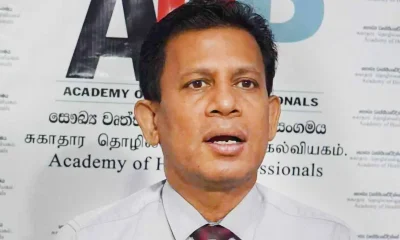
 News7 days ago
News7 days agoSuspension of Indian drug part of cover-up by NMRA: Academy of Health Professionals
-
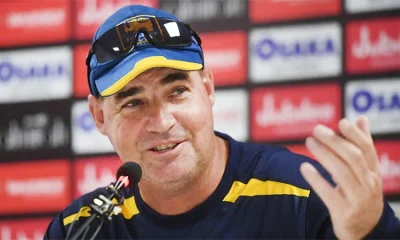
 Sports5 days ago
Sports5 days agoChief selector’s remarks disappointing says Mickey Arthur
-
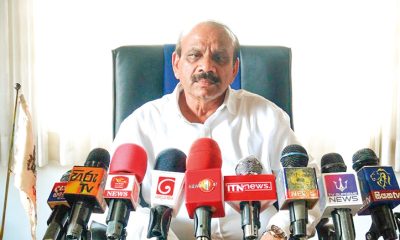
 News4 days ago
News4 days agoStreet vendors banned from Kandy City
-

 Editorial7 days ago
Editorial7 days agoA very sad day for the rule of law
-

 News7 days ago
News7 days agoUS Ambassador to Sri Lanka among 29 career diplomats recalled


